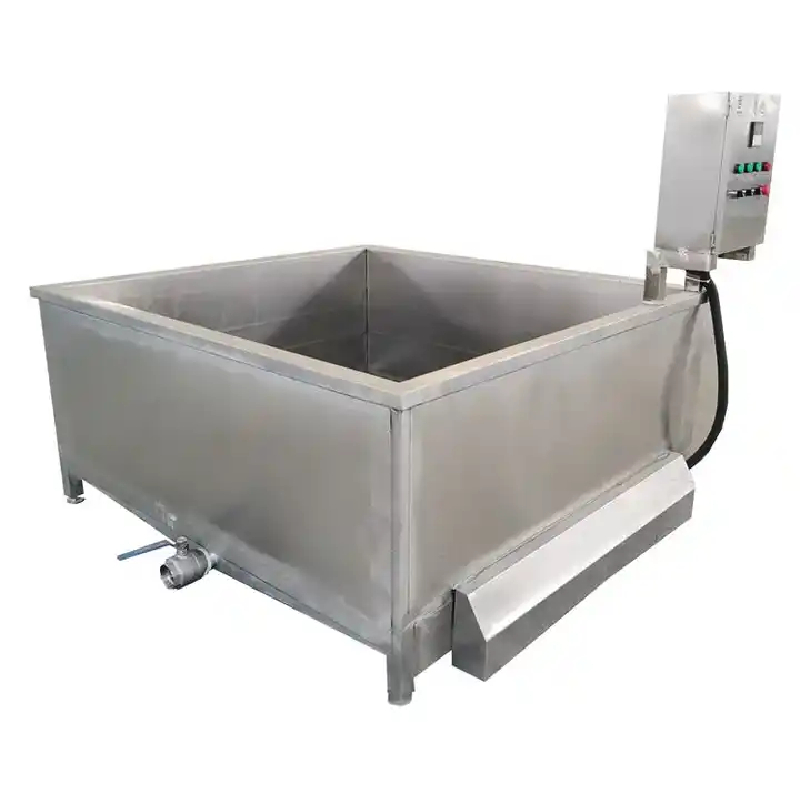floating fish feed extruder
Agosti . 28, 2024 12:37 Back to list
floating fish feed extruder
Understanding Floating Fish Feed Extruders
Floating fish feed extruders play a vital role in the aquaculture industry by producing high-quality feed that enhances the growth and health of fish. With the increasing demand for aquaculture products globally, the importance of efficient and sustainable fish feed production has never been more crucial.
What is a Floating Fish Feed Extruder?
A floating fish feed extruder is a specialized machine that processes raw ingredients into extruded feed pellets that float on water's surface
. These extruders work by applying heat, moisture, and pressure to a combination of ingredients, which can include fish meal, grains, and added vitamins and minerals. The process transforms these raw materials into a palatable and nutrient-rich feed suitable for various fish species.The Extrusion Process
The extrusion process involves several critical steps. First, raw ingredients are ground into a fine powder to ensure uniformity. This powder, often made up of fish meal, corn, soybean meal, and other additives, is then mixed with water and steam and fed into the extruder. Inside the extruder, the mixture is subjected to high temperatures and pressure. As it passes through the extruder, the raw mixture gelatinizes, resulting in a dough-like consistency.
floating fish feed extruder

Once the mixture reaches the end of the extruder, it is forced through a die, which shapes it into pellets. These pellets are then cut into uniform sizes before being immediately cooled. The cooling process prevents the pellets from collapsing, allowing them to float effectively when placed in water.
Benefits of Floating Fish Feed
Floating fish feed offers several advantages over traditional sinking feeds. One major benefit is that it allows fish farmers to monitor feeding behavior. Because the feed floats, farmers can observe how actively their fish are feeding, leading to better management practices. Additionally, floating feed reduces waste, as it minimizes the amount of uneaten feed that sinks to the bottom and deteriorates water quality.
Floating feeds are also more beneficial for the health of fish. They promote better digestion due to their buoyancy, helping fish reach their optimal growth potential. Moreover, the production of these pelleted feeds can be tailored to meet the nutritional requirements of various fish species, ensuring that the dietary needs of the fish are met effectively.
Conclusion
In summary, floating fish feed extruders are indispensable in the modern aquaculture industry. They enable the production of high-quality, nutritious feed that not only aids in the healthy growth of fish but also promotes sustainable farming practices. As the demand for fish continues to rise, the importance of advanced extrusion technology in producing floating fish feed will only increase, ensuring a steady supply of this essential resource for the global market.
-
Automatic Feeding Line System - Anping County Yize Metal Products Co., Ltd.|Pan Feeder Nipple Drinker
NewsAug.11,2025
-
Multifunctional Feed Chaff Cutter Machine | High-Efficiency
NewsAug.11,2025
-
Automatic Feeding Line System Pan Feeder Nipple Drinker - Anping County Yize Metal Products Co., Ltd.
NewsAug.11,2025
-
Automatic Feeding Line System - Anping County Yize Metal Products Co., Ltd.|Pan Feeder Nipple Drinker
NewsAug.11,2025
-
Automatic Feeding Line System - Pan Feeder Nipple Drinker | Anping County Yize Metal Products Co., Ltd.
NewsAug.11,2025
-
Automatic Feeding Line System Pan Feeder Nipple Drinker - Anping County Yize Metal Products Co., Ltd.
NewsAug.11,2025






